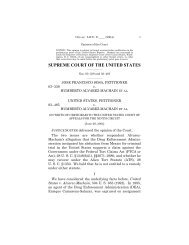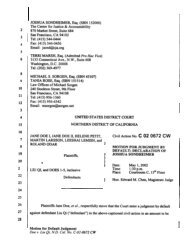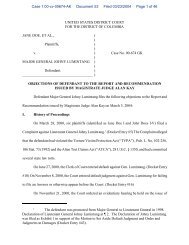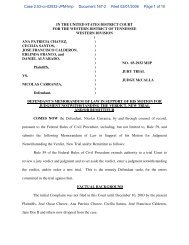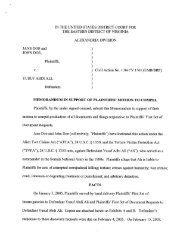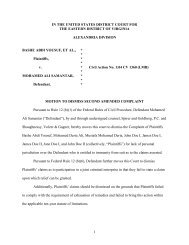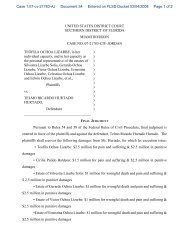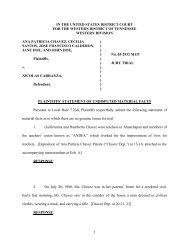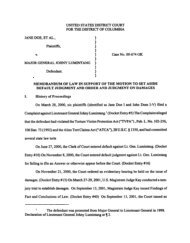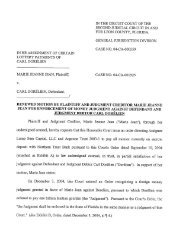Petitioner, v. Respondents. - Center for Justice and Accountability
Petitioner, v. Respondents. - Center for Justice and Accountability
Petitioner, v. Respondents. - Center for Justice and Accountability
You also want an ePaper? Increase the reach of your titles
YUMPU automatically turns print PDFs into web optimized ePapers that Google loves.
35the establishment of a commission <strong>and</strong> whether thepetitioner fell within its jurisdiction. 327 U.S. 1, 9-18 (1946). 36Although the petitioner was able to rely on the statutoryprovisions authorizing habeas, this Court explained that theresult would have been no different had there been nostatutory habeas, as Congress <strong>and</strong> the Executive “could not,unless there was suspension of the writ, withdraw from thecourts the duty <strong>and</strong> power to make such inquiry into theauthority of the commission as may be made by habeascorpus.” Id. at 9. See also Quirin, 317 U.S. at 25 (“neither the[Presidential Proclamation subjecting enemy aliens tocommissions] nor the fact that they are enemy aliens<strong>for</strong>ecloses consideration by the courts of petitioners’contentions that the Constitution <strong>and</strong> laws of the UnitedStates constitutionally enacted <strong>for</strong>bid their trial by militarycommission.”).Eisentrager does not support a different result. Thepetitioners in that case were captured, held, <strong>and</strong> tried by acommission sitting in China <strong>and</strong> “at no relevant time <strong>and</strong> inno stage of [their] captivity, ha[d] been within [U.S.]territorial jurisdiction.” 339 U.S. at 768. 37 The qualification36 The writ has traditionally been available to challenge the jurisdiction ofa committing tribunal, including a military commission. E.g., Quirin, 317U.S. at 19; Milligan, 71 U.S. at 118; Paul M. Bator, Finality in Criminal Law<strong>and</strong> Federal Habeas Corpus <strong>for</strong> State Prisoners, 76 HARV. L. REV. 441, 475 (1963)(“The classical function of the writ of habeas corpus was to assure theliberty of subjects against detention by the executive or the military.”); St.Cyr, 533 U.S. at 302 n.19 (“impressment into the British Navy”).37 Thus, the Court explained that each <strong>Petitioner</strong>(a) [was] an enemy alien; (b) [had] never been or resided in theUnited States; (c) was captured outside of our territory <strong>and</strong> thereheld in military custody…; (d) was tried <strong>and</strong> convicted by aMilitary Commission sitting outside the United States; (e) <strong>for</strong>offenses against laws of war committed outside the United States;(f) <strong>and</strong> [was] at all times imprisoned outside the United States.339 U.S. at 777 (emphasis added). It was based on this lack of connectionto territory within U.S. control that the Court distinguished Quirin <strong>and</strong>Yamashita. Id. at 779-80. The Court explained that a nexus with a territoryunder U.S. control, like the Philippines then or Guantanamo now, wassufficient to invoke the right to habeas. Id. at 780. Moreover, theEisentrager <strong>Petitioner</strong>s did not invoke 28 U.S.C. § 2241(c)(3), violation ofthe Constitution <strong>and</strong> laws of the United States, so the Court had nooccasion to reach the specific issue. See Odah Amicus Br., at 11-13.As this Court concluded in Rasul, individuals detained in Guantanamo




